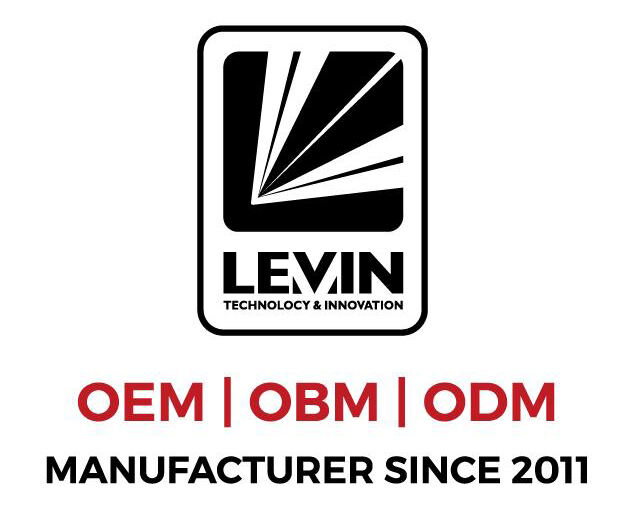Welding equipment production in international markets is likely to experience important industrial development across the coming years. The success of B2B customers such as businesses, manufacturers and industrial companies in today's changing market environment depends on their continuous monitoring of welding equipment trends. The article explores upcoming trends that will transform international welding equipment markets while delivering essential information to help organizations succeed in marketplace competition.

1. Advanced Automation and Robotics Integration
Welding equipment manufacturers have included advanced automation systems as a main trend alongside robotic integration. Production processes receive essential support from robotic welding systems due to the demands from manufacturers for efficient precision while achieving cost savings. The combination of these systems decreases human mistakes while boosting manufacturing output rates and delivering uniform weld quality so businesses find them attractive for cutting operational costs.
The capabilities of robotic welding systems receive additional support from recent advances in artificial intelligence (AI) and machine learning (ML). Welding robots operating through AI adapt rapidly to complex configurations and material changes thereby delivering improved precision and workflow versatility to the welding procedure. Technology advancement should lead to the development of improved robotic welding equipment that offers easier operations.
2. Eco-Friendly and Sustainable Solutions
The industrial trend toward environmental sustainability now extends to welding equipment also. Many environmental movements have sparked new developments in welding technology to help industries decrease their carbon footprint along with their energy usage and reduce their waste output. The development of hybrid welding methods using laser-arc hybrid welding delivers energy-efficient welding technology which substitute standard welding procedures.
The market requires more equipment to facilitate manufacturing through sustainable materials which can be recycled. Environmental responsibility grows among both consumers and businesses as a key driver of this trend which exists due to regulatory needs. The implementation of sustainable welding solutions helps companies improve their CSR standing which creates opportunities to reach environmentally-concerned customers.
3. Adoption of Industry 4.0 Technologies
Welding equipment stands in the front lines of industrial transformation that defines the manufacturing sector under the Fourth Industrial Revolution paradigm. Real-time monitoring and predictive maintenance as well as data-driven decision-making become possible through integration of the Internet of Things (IoT) alongside big data analytics and smart sensors in welding equipment.
By integrating IoT technology welding machines become capable of monitoring welding process parameters which they collect and transmit including temperature along with voltage and current measurements. The collection of this information enables pattern recognition which allows risk assessment for components to avoid equipment failures that lead to maximized equipment runtime durations.
The implementation of these modern technologies allows businesses to achieve maximal efficiency and top-quality control and cost-saving efficiency which makes them essential for sustaining competition in global markets.
4. Focus on Operator Safety and Training
The safety of operators remains crucial because modern welding equipment operates at higher levels of complexity. New welding equipment development focuses on user safety by integrating systems to detect dangerous situations present-time and self-activating safety features together with ergonomic designs which combat worker fatigue and accidents.
The advancement of welding technology requires organized training programs so operators can learn proper operation techniques for modern welding devices. The education industry has started using virtual reality (VR) and augmented reality (AR) training modules because they combine immersive learning with risk-free simulation of welding scenarios in an interactive environment. This type of training helps operators gain competency while at the same time it increases workplace productivity and safety standards.
5. Expansion of Global Markets and Customization
The welding equipment market continues to grow internationally because emerging economies provide growing markets for expansion. Regions like the Asia-Pacific and Latin America and Africa will experience major growth of welding equipment demand because of their expanding infrastructure development alongside industrialization and urbanization.
In order to access these market opportunities manufacturers have started offering customized solutions that address unique commercial requirements across different markets. The industry aims to build multifunctional instruments that manage many materials together with solutions for different power capacities while providing area-specific servicing and assistance. Entrepreneurs benefit from superior competitiveness when they deliver specialized solutions together with immediate customer care in international markets.
Conclusion
Welding equipment exists in a future that displays fast technological progress coupled with sustainability emphasis and new market direction. Keeping up with market trends constitutes a vital requirement for B-side customers because it helps them make critical choices and defend their competitive position. Businesses will achieve success in the evolving welding equipment industry through their adoption of automation and robotics and their implementation of eco-friendly practices together with Industry 4.0 technologies and safety measures and training and service coordination for emerging markets.

 EN
EN
 AR
AR
 BG
BG
 HR
HR
 CS
CS
 DA
DA
 NL
NL
 FI
FI
 FR
FR
 DE
DE
 EL
EL
 HI
HI
 IT
IT
 JA
JA
 KO
KO
 NO
NO
 PL
PL
 PT
PT
 RO
RO
 RU
RU
 ES
ES
 SV
SV
 TL
TL
 IW
IW
 ID
ID
 LV
LV
 LT
LT
 SR
SR
 SK
SK
 SL
SL
 UK
UK
 VI
VI
 HU
HU
 TH
TH
 TR
TR
 MS
MS
 BE
BE
 KK
KK
 KY
KY

